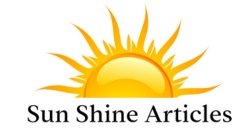Germany Organic Food Market Overview
Market Size in 2024: USD 8.10 Billion
Market Forecast in 2033: USD 16.50 Billion
Market Growth Rate: 7.40% (2025-2033)
According to the latest report by IMARC Group, the Germany organic food market size was valued at USD 8.10 Billion in 2024. Looking forward, IMARC Group estimates the market to reach USD 16.50 Billion by 2033, exhibiting a CAGR of 7.40% from 2025-2033.
Germany Organic Food Industry Trends and Drivers:
As more consumers give health, transparency, and environmental consciousness first priority in their purchasing choices, the organic food business in Germany is developing steadily. Rising consumer choices for naturally certified items that exhibit clean-label characteristics, non-GMO certification, and little processing match rather well with the country’s long-held sustainability principles. High consumption of organic dairy, fruits, veggies, grains, and plant-based protein items is being driven by widespread understanding of their nutritional advantages and lower environmental impact. Demand for organic packaged and ready-to-eat goods is also increasing, fueled by hectic urban lifestyles and changing snacking habits. While food makers are innovating with product development, including ancient grains, enriched components, and environmentally friendly packaging, supermarkets and organic specialty chains are adding selections. The market is accepting ethical sourcing, short-supply chains, and more transparency from farm to shelf as customers become more picky about origin, manufacturing methods, and social effect; these elements are strengthening trust and lifetime loyalty. Regionally, varied consumption patterns, retail expansion, and supporting institutional environments are influencing the organic food scene in Germany.
Strong agricultural customs are interacting with rising demand for locally produced organic food in southern states like Bavaria and Baden-Württemberg, hence supporting farm-to-table ideas and biodynamic farming projects. Northern areas including Hamburg and Schleswig-Holstein are showing growing demand for organic baked goods, environmentally certified beverages, and sustainable fish. Rising centers of premium organic consumption are metropolitan regions like Berlin, Frankfurt, and Munich, where wealthy, health-conscious consumers are actively interacting with subscription-based grocery systems and internet channels. Supported by regional financial initiatives and educational campaigns advocating organic farming techniques, East German states are seeing slow market penetration. Particularly in organic animal husbandry, climate-resilient crops, and zero-waste manufacturing systems, the federal government’s ongoing support in organic research and rural development is stimulating innovation. These area-specific trends are helping the organic business to be flexible and successful in several socioeconomic environments all throughout the nation. Sustaining momentum inside the Germany organic food market depends mostly on policy and technology. Using data-driven technologies, producers are improving outputs while upholding organic standards, adding smart irrigation systems, and implementing AI-based quality control.
E-commerce platforms are simplifying direct-to- consumer channels, providing customized organic meal kits, and using transparent labeling systems that enable end-to-end product traceability. Furthermore, consumer access to certified organic goods, online and in-store, is being improved via cooperative projects among merchants, government agencies, and certification organizations. Manufacturers are spending in regenerative agriculture techniques and circular food systems as regulatory frameworks keep promoting sustainable land use, pesticide-free cultivation, and carbon-neutral supply chains. Additionally driving expansion in sectors like vegan, gluten-free, and allergen-free organic foods—therefore further diversifying the market offering—the growth of ethical consumerism also helps to fuel this expansion.
Download sample copy of the Report: https://www.imarcgroup.com/germany-organic-food-market/requestsample
Germany Organic Food Industry Segmentation:
The report has segmented the market into the following categories:
Product Type Insights:
- Organic Fruits and Vegetables
- Organic Meat, Poultry and Dairy
- Organic Processed Food
- Organic Bread and Bakery
- Organic Beverages
- Organic Cereal and Food Grains
- Others
Distribution Channel Insights:
- Supermarkets and Hypermarkets
- Specialty Stores
- Convenience Stores
- Online Stores
- Others
Application Insights:
- Bakery and Confectionery
- Ready-to-eat Food Products
- Breakfast Cereals
- Others
Regional Insights:
- Western Germany
- Southern Germany
- Eastern Germany
- Northern Germany
Competitive Landscape:
The competitive landscape of the industry has also been examined along with the profiles of the key players.
Germany Organic Food Market News:
- In February 2025, BIOFACH 2025, the biggest global trade exhibition for organic food and farming, will take place in Nuremberg, Germany, from February 11-14. The event will showcase innovations in vegan agriculture, sustainable packaging, and ethical products, including Biocyclic Vegan Farming and compostable packaging solutions from Bio4Pack.
- In March 2023, Lidl and Bioland, one of the largest organic food associations in Germany announced an expansion of their partnership aiming to increase organic and Bioland items to make up 10% of Lidl’s entire range by 2025. The expansion aimed to strengthen cooperation with local farmers, reduce transport routes and offer high-quality organic products to millions of consumers.
Key highlights of the Report:
- Market Performance (2019-2024)
- Market Outlook (2025-2033)
- COVID-19 Impact on the Market
- Porter’s Five Forces Analysis
- Strategic Recommendations
- Historical, Current and Future Market Trends
- Market Drivers and Success Factors
- SWOT Analysis
- Structure of the Market
- Value Chain Analysis
- Comprehensive Mapping of the Competitive Landscape
Note: If you need specific information that is not currently within the scope of the report, we can provide it to you as a part of the customization.
Ask analyst for your customized sample: https://www.imarcgroup.com/request?type=report&id=29439&flag=C
About Us:
IMARC Group is a global management consulting firm that helps the world’s most ambitious changemakers to create a lasting impact. The company provide a comprehensive suite of market entry and expansion services. IMARC offerings include thorough market assessment, feasibility studies, company incorporation assistance, factory setup support, regulatory approvals and licensing navigation, branding, marketing and sales strategies, competitive landscape and benchmarking analyses, pricing and cost research, and procurement research.
Contact Us:
IMARC Group
134 N 4th St. Brooklyn, NY 11249, USA
Email: sales@imarcgroup.com
Tel No:(D) +91 120 433 0800
United States: +1-631-791-1145

